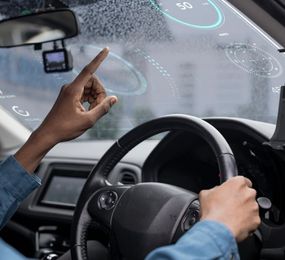The advent of autonomous vehicles (AVs) represents a significant leap forward in automotive technology, promising to revolutionize transportation by enhancing efficiency, reducing traffic accidents, and providing greater accessibility. However, the deployment of AVs comes with a unique set of challenges, particularly in the realm of functional safety. Ensuring that these vehicles operate reliably and safely in all conditions is paramount to gaining public trust and achieving widespread adoption. In this article, we will explore the key functional safety challenges faced by autonomous vehicles.
Understanding Functional Safety in Autonomous Vehicles
Functional safety refers to the aspect of safety that depends on a system or equipment operating correctly in response to its inputs, including safe management of any failures. In the context of autonomous vehicles, functional safety involves ensuring that the vehicle's complex array of sensors, software, and hardware systems work together seamlessly to prevent accidents and mitigate risks, even in the presence of faults or unexpected conditions.
Key Functional Safety Challenges
System Reliability and Redundancy Autonomous vehicles rely on a multitude of subsystems, including sensors, processing units, and actuators, all of which must operate reliably. A failure in any of these components could lead to catastrophic consequences. To address this, AVs must be designed with redundant systems, ensuring that if one component fails, another can take over its function without compromising safety. However, designing and validating these redundant systems is a significant engineering challenge.
Sensor Accuracy and Data Fusion AVs depend heavily on sensors such as cameras, LiDAR, radar, and ultrasonic devices to perceive their environment. The accuracy of these sensors is critical for the vehicle to make safe decisions. However, each sensor type has its limitations, such as poor performance in adverse weather conditions or difficulty in detecting certain objects. Data fusion, the process of combining information from multiple sensors, is used to create a comprehensive view of the environment. Ensuring that data fusion algorithms are accurate and robust under all conditions is a major challenge for functional safety.
Complex Software and Algorithm Validation The software and algorithms that govern AV behavior are incredibly complex, involving machine learning models, decision-making algorithms, and control systems. Validating this software to ensure it behaves correctly in every possible scenario, including edge cases and rare events, is a daunting task. Traditional validation techniques may not be sufficient, necessitating the development of new methodologies and tools specifically for AVs.
Handling Edge Cases and Unpredictable Scenarios One of the most significant challenges in AV safety is the ability to handle edge cases—rare, unexpected, or unusual driving scenarios that may not have been encountered during testing. Autonomous vehicles must be capable of responding safely to these situations, whether it's navigating through a construction zone, reacting to sudden changes in road conditions, or dealing with erratic behavior from other road users. Developing systems that can anticipate and manage these edge cases is critical to ensuring the safety of AVs.
Cybersecurity Threats Autonomous vehicles are highly connected, relying on communication with other vehicles, infrastructure, and cloud services. This connectivity introduces potential cybersecurity vulnerabilities that could be exploited by malicious actors. A cyberattack on an AV could compromise its functional safety, leading to dangerous situations. Therefore, robust cybersecurity measures must be integrated into the design of AV systems to protect against these threats.
Register today to secure your spot, please check here: https://bit.ly/3zH7AKk
For more information and group participation, contact us: [email protected]
















